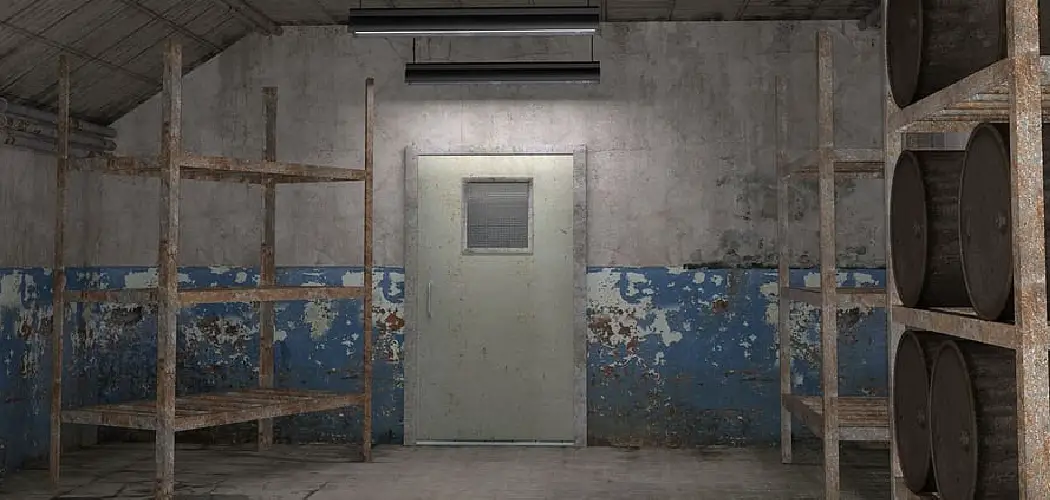Storing items in a damp basement can be a challenging task. The high humidity levels and potential for water seepage can put your belongings at risk of damage from mold, mildew, and deterioration. However, with proper strategies and precautions, it is possible to effectively store items in a damp basement while protecting them from moisture-related issues.
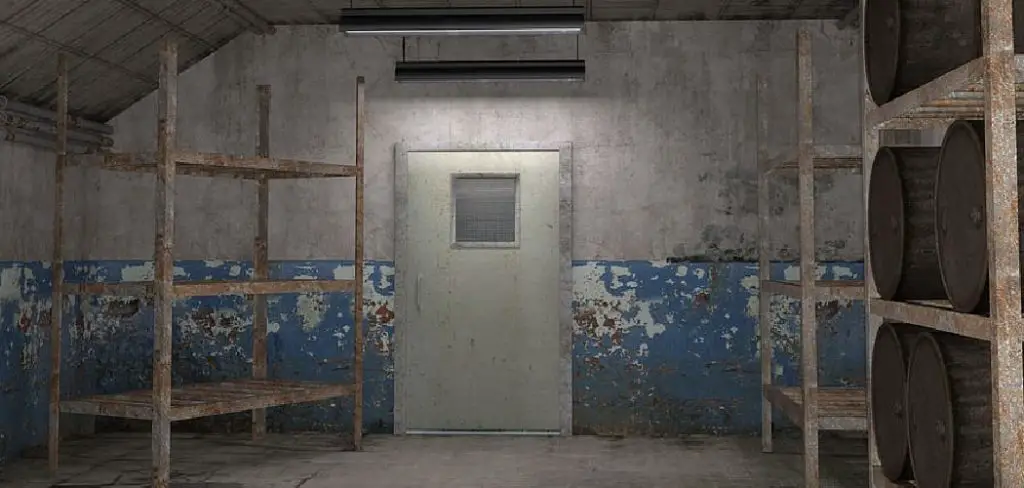
In this article, we will explore practical tips and techniques on how to store things in a damp basement. From selecting suitable storage containers to implementing moisture control measures, we will provide you with valuable insights to safeguard your possessions and maintain their condition. By following these guidelines, you can make the most of your basement storage space and ensure that your belongings remain safe and well-preserved, even in a damp environment.
Understanding the Challenges of Storing Items in a Damp Basement
When storing items in a damp basement, you must understand the unique challenges associated with keeping your belongings safe and dry. Moisture levels in a basement can fluctuate drastically due to fluctuations in temperature and humidity.
When this happens, it can cause condensation to form on surfaces, leading to corrosion and mold growth. Additionally, if not treated properly, dampness can seep into boxes and other containers containing your stored items, leading to damage.
In order to keep your belongings safe in a damp basement setting, there are several steps that need to be taken. The first is to create an environment of low relative humidity by improving ventilation within the space. Using dehumidifiers or air conditioners can help reduce moisture levels significantly, as can keeping windows open to allow air to circulate.
The next step is to use proper storage containers and techniques. Plastic bins or storage tubs with tight fitting lids are ideal for damp basement environments. When packing items into these containers, it’s important to make sure that they are not overfilled, as this can cause them to leak when condensation collects on the inside surfaces.
Additionally, wrapping any delicate items in plastic before storing them can help protect against damage from dampness and humidity. Finally, it’s important to ensure that all stored items remain dry while in the basement environment. To do this, be sure to check in periodically on your stored items and look for signs of moisture or mold growth. If any is found, take immediate action to rectify the issue before it becomes a bigger problem.
Importance of Proper Storage to Prevent Damage and Mold Growth
Properly storing items in a damp basement is essential to prevent damage and mold growth. It is important to be aware of the fact that damp basements are highly susceptible to growing mold if left unchecked, which can lead to health problems and property damage. Proper storage techniques can ensure that items remain dry and protected from potential moisture-related issues.
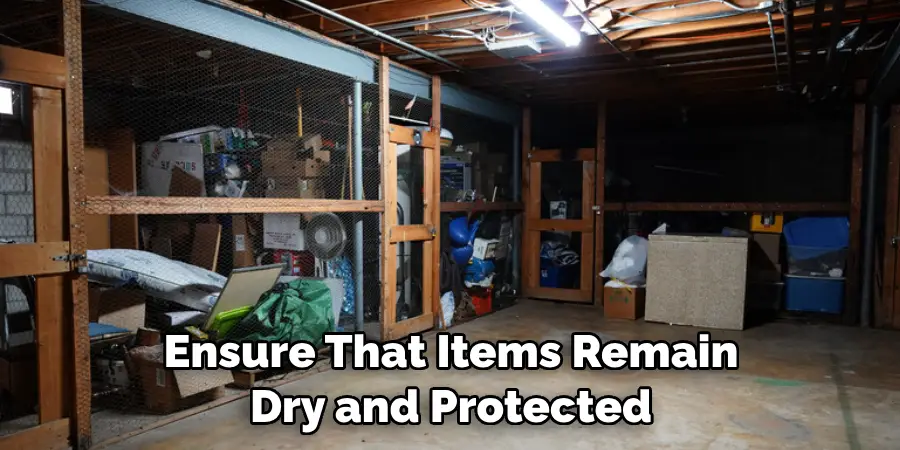
To begin, it is important to keep any stored items away from water sources, such as walls or pipes that may leak or flood. If any water does get into the basement, make sure it drains away from stored items. Place plastic liners around furniture and other objects susceptible to water damage.
When possible, elevate large objects off the ground on pallets or tables with legs so that moisture does not collect underneath them. Regularly check the area for any signs of water intrusion and take immediate action if any is present.
When it comes to storing items, use shelves or cupboards with doors to keep out dust and humidity.
Place a dehumidifier in the basement to regulate humidity levels, which will help protect stored items from mold growth. For added protection, wrap objects in plastic or place them in airtight containers before storage. This can provide an extra layer of defense against moisture damage and other types of deterioration over time.
By taking these precautions when storing items in damp basements, one can help ensure those belongings remain safe and dry, free from potential damage caused by mold growth or excess moisture.
10 Ways How to Store Things in a Damp Basement
Declutter and Organize:
Before storing items in a damp basement, it is crucial to declutter and organize your belongings. Sort through your possessions and identify what you truly need and want to keep. Dispose of or donate any items that are no longer useful or meaningful to reduce the amount of stuff you need to store.
By decluttering, you create more space and make it easier to organize your remaining belongings. Categorize similar items together, such as seasonal decorations, clothing, or tools, and use labeled storage containers or boxes to keep everything organized.
Use Moisture-Resistant Storage Containers:
Investing in high-quality, moisture-resistant storage containers is essential for protecting your belongings in a damp basement. Opt for plastic bins with tight-fitting lids that create a seal against moisture. Look for containers made of durable materials like polypropylene or high-density polyethylene, which are less likely to crack or break when exposed to damp conditions.
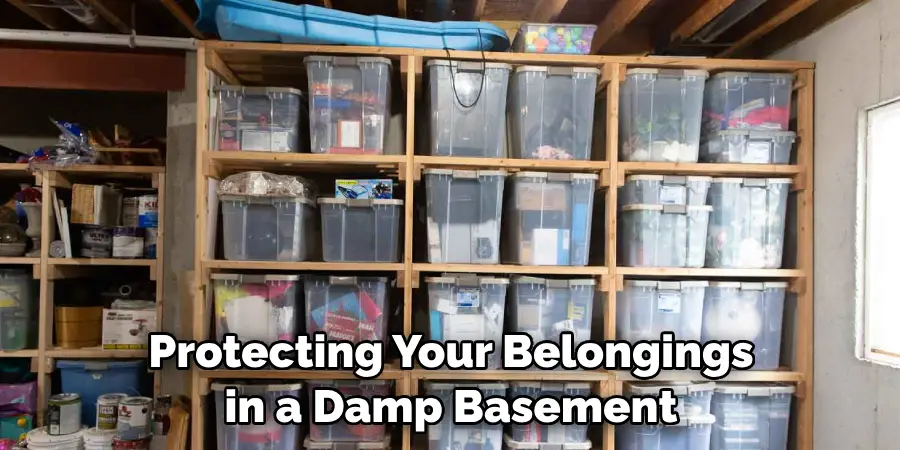
Seal Items in Plastic Bags:
For added protection against moisture, individually seal items in plastic bags before placing them in storage containers. Use heavy-duty, zip-top bags or vacuum-sealed bags to create an additional barrier against dampness.
This is particularly important for items that are sensitive to moisture, such as fabric, paper documents, or electronics. Make sure to remove as much air as possible from the bags before sealing them to prevent any trapped moisture.
Elevate Stored Items:
Prevent direct contact with a damp basement floor by elevating your stored items. Moisture can seep through concrete floors or arise from ground moisture, putting your belongings at risk of damage.
Use pallets, shelves, or metal racks to create a raised platform for your containers. This elevation helps to minimize the risk of moisture seeping into your belongings. Choose materials for the platform that are resistant to moisture and can withstand the weight of your storage containers.
Utilize Desiccants and Moisture Absorbers:
Placing desiccants or moisture absorbers in your storage area can significantly reduce humidity levels and mitigate the risk of moisture-related damage. Desiccants are substances that absorb moisture from the air, effectively reducing humidity.
Silica gel packets, commonly found in packaging, are a popular desiccant option. They can be reused by drying them out in an oven. Charcoal briquettes, known for their moisture-absorbing properties, are another effective choice.
Install a Dehumidifier:
Consider installing a dehumidifier in your damp basement to regulate moisture levels. A dehumidifier works by extracting excess moisture from the air, creating a drier environment that is less conducive to mold and mildew growth.
There are different types of dehumidifiers available, including portable units and whole-house systems. Select a dehumidifier that is appropriate for the size of your basement and has a built-in humidity control feature. Position the dehumidifier in a central location within your basement and ensure it has proper drainage for collected water.

Optimize Air Circulation:
Promoting adequate air circulation in your basement is crucial for reducing moisture buildup and maintaining a healthy environment for stored items. Stagnant air can contribute to moisture-related issues. To improve air circulation, use fans strategically placed to move air around the basement.
Ceiling fans or oscillating fans can be effective in promoting airflow. Additionally, consider opening windows or vents periodically to allow fresh air to enter the space. However, be cautious when opening windows if the outside air is excessively humid or damp, as this could exacerbate the moisture issue.
Insulate Basement Walls and Floors:
Insulating basement walls and floors can help reduce condensation and moisture seepage. Moisture can enter your basement through porous concrete walls or floors, leading to damp conditions. Insulation acts as a barrier, reducing the transfer of moisture from outside sources into your storage area. Use moisture-resistant insulation materials, such as closed-cell foam insulation or extruded polystyrene foam boards.
Monitor and Control Humidity Levels:
Regularly monitoring the humidity levels in your basement is essential for preventing moisture-related issues. Use a hygrometer, a device that measures relative humidity, to keep track of the moisture levels. Aim for a relative humidity range of 30-50% in your basement to discourage mold and mildew growth.
Conduct Regular Inspections:
Performing regular inspections of your stored items and the basement environment is crucial for detecting and addressing any potential moisture issues promptly. Check for signs of moisture damage, mold growth, or leaks in your storage containers and on the walls, floors, and ceilings of the basement.
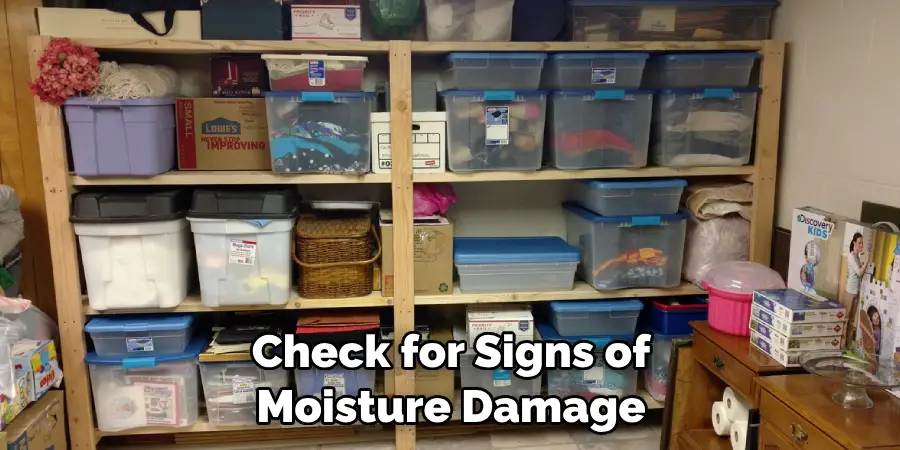
Look out for water stains, musty odors, or condensation buildup. If you notice any signs of moisture, investigate and address the root cause immediately. This may involve fixing leaks, adjusting moisture control measures, or relocating vulnerable items to a drier area.
Conclusion
In conclusion, storing in a damp basement does not have to be a challenge. By following the tips from this blog post such as using airtight containers, desiccants, and taking steps to keep humidity low you can keep your items in great condition for years to come. Above all else, remember that prevention is key – if you take the necessary steps up front, you won’t have to worry about expensive repair or replacement bills down the road.
It may take some effort now but it will be well worth it! So don’t hesitate – act now and find out how you can best store your items in a damp basement and get started making lasting memories with your stored items. As always, practice safety precautions when utilizing any storage options listed in this blog post and enjoy how to store things in a damp basement!

